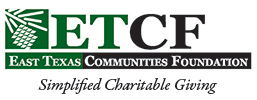In my opinion, some of the finest signs of progress and growth in Tyler over the last 10 years have been the opening of Northern Tool and Equipment and Harbor Freight Tools. I love tools. Perusing the aisles of Harbor Freight Tools is just as fun for me as going to Canton or Magnolia Market is for some of you who may be reading this column. Harbor Freight is filled with an amazing assortment of shiny new tools, many of which I couldn’t begin to tell you why you would need them or how to use them; they are all very interesting and appealing. Having worked on my fair share of home improvement and repair projects, there is nothing more useful than the right tool for the job.
In the world of giving there are many tools that you can use to reach your charitable objectives. In earning my Chartered Advisor in Philanthropy designation a few years ago, one-third of our course material was devoted to learning the uses of a wide variety of charitable planning tools. We learned about life estates, bargain sales, charitable remainder trusts, charitable lead trusts, private foundations and many others. Many of these tools are somewhat complex and not often used. But there is one tool that is unique in its simplicity, which explains its popularity. That tool is the donor-advised fund.
According to the November 2017 edition of the Chronicle of Philanthropy, in 2016 the number one charity in America was the Fidelity Charitable Gift Fund, receiving over $4 billion in contributions, surpassing United Way Worldwide, Feeding America and the Salvation Army. The primary tool available to donors through the Fidelity Charitable Gift Fund is a donor-advised fund. In fact, six of the top ten charities in the 2016 Philanthropy 400 list were organizations offering donor-advised funds as their primary or only service. Why are donor-advised funds so popular and effective as a tool for charitable giving? The answer is simple: simplicity.
At East Texas Communities Foundation our motto is “Simplified Charitable Giving”. Donor-advised funds (DAFs) comprise one-third of the number of our funds because they help our donors manage their charitable giving in a more simplified manner, compared to other options. A November 7th article by Patrick Rooney in Nonprofit Quarterly cited three reasons for their popularity: 1) timing, 2) tax efficiency and 3) privacy.
First, DAFs allow donors to make contributions to their fund in lump-sums at strategic moments, such as at the sale of a business, at the time of an inheritance, or annually during financial events such as profit sharing distributions or an annual investment portfolio or tax review. The specific decision on which charities should receive how much and when can be separated from the time-sensitive decision to be charitable. Second, DAF sponsoring organizations such as ETCF and Fidelity Charitable Gift Fund are public charities, which permits donors to maximize their giving by making gifts of appreciated assets such as stocks, real estate or business interests. Such gifts would be cumbersome to make to multiple organizations, but a single gift to a DAF sponsor, which is well-equipped to handle such complex gifts, can be converted to multiple grants to a wide variety of public charities over the course of days, months, years or generations. Finally, DAFs permit donors to make grants to charities with acknowledgment to the advisor or anonymously. Some donors prefer recognition while others prefer anonymity. A DAF allows donors to select either option, with each grant.
In addition to the reasons cited above, a donor-advised fund at ETCF also comes with a friendly, local staff that can help you research grant opportunities today and make thoughtful charitable plans for your future. As the holidays approach and all the ads for shiny new tools begin to appear in the paper and on television, may it be a reminder to you that there is a great tool for your charitable giving that is waiting for you to enjoy. Opening a new donor-advised fund may be your next best opportunity to give well.

Recent Comments